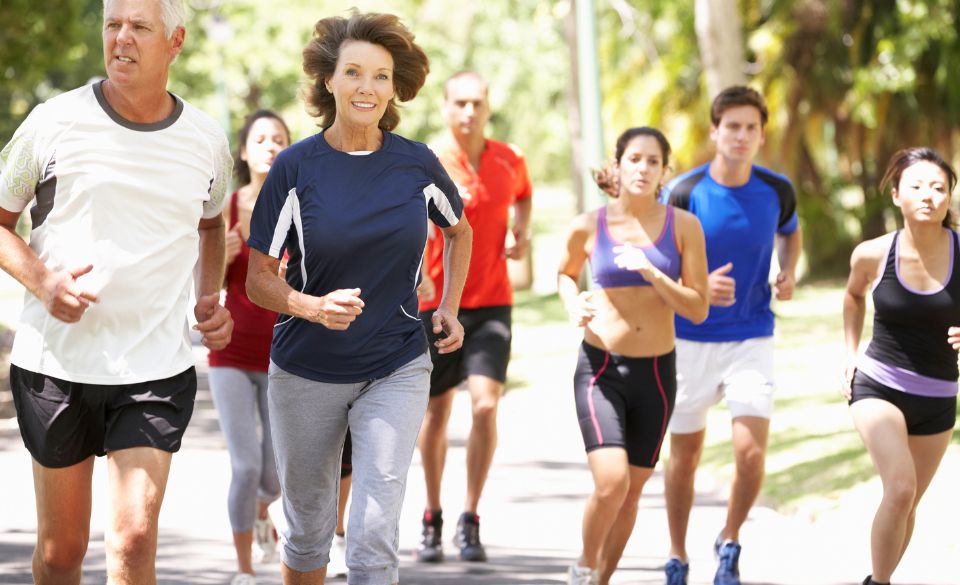
Why Do People Who Run Look Older?
Page Contents
Have you ever noticed that some avid runners appear older than their actual age? It’s a curious phenomenon that has sparked numerous discussions among fitness enthusiasts and researchers alike. While running is often associated with improved health and youthful vitality, there seems to be a paradoxical perception that long-distance runners, particularly those who engage in intense training, exhibit signs of premature aging. In this blog post, we will delve into this intriguing topic and explore the potential reasons behind why people who run may look older than their non-running counterparts.
The Impact of Sun Exposure and Outdoor Training
One significant factor that contributes to the perceived aging of runners is sun exposure. It’s no secret that spending hours outdoors, especially during peak sunlight hours, can accelerate skin aging due to prolonged UV radiation exposure. The repetitive motion of running, combined with the extended periods of time spent in the sun, can lead to increased photoaging effects such as fine lines, wrinkles, and hyperpigmentation. Several studies have highlighted the importance of protecting the skin from harmful UV rays, emphasizing the use of sunscreen, protective clothing, and seeking shade whenever possible.
Interestingly, researchers have found that the cumulative effects of sun exposure on runners’ faces can make them appear older, while their bodies may still exhibit the fitness and muscularity associated with regular exercise. This discrepancy can be attributed to the fact that facial skin is generally more susceptible to damage and shows signs of aging more prominently than other body parts. Therefore, even though running may have a positive impact on overall health and fitness, neglecting proper sun protection could contribute to the perceived aging effect.
Oxidative Stress and Inflammation: The Balancing Act
Another potential explanation for the perceived aging effect in runners lies in the delicate balance between exercise-induced oxidative stress and inflammation. Regular aerobic exercise, such as running, is known to promote the production of free radicals, which can cause cellular damage if not effectively countered by the body’s antioxidant defense system. While exercise-induced oxidative stress is a natural part of the body’s adaptation to physical activity, excessive or chronic oxidative stress can lead to accelerated aging processes.
Furthermore, intense and prolonged exercise can also trigger inflammation in the body. Inflammation is a normal response to tissue damage and plays a crucial role in the recovery and adaptation process. However, persistent inflammation can have detrimental effects and contribute to the aging process. It’s important to note that moderation and proper recovery play key roles in mitigating the potential negative impact of oxidative stress and inflammation. Adequate rest, nutrition, and a well-balanced training program are essential for maintaining the body’s resilience and preventing accelerated aging.
The Role of Volume and Intensity in Running
The volume and intensity of running can also play a significant role in the perceived aging effect. Long-distance runners who consistently push their bodies to the limit may be more prone to overuse injuries and musculoskeletal issues. Repetitive strain on joints, tendons, and ligaments can lead to wear and tear, potentially causing discomfort and mobility limitations. These factors can indirectly contribute to an aged appearance, as the body’s ability to recover and repair itself may be compromised.
Additionally, high-intensity running sessions can result in elevated levels of cortisol, a stress hormone known to have various adverse effects on the body. Chronically elevated cortisol levels can interfere with collagen synthesis and promote the breakdown of collagen, the protein responsible for maintaining skin elasticity and youthfulness. As a result, runners who frequently engage in high-intensity workouts may exhibit signs of premature aging due to the impact of cortisol on the skin.
The Importance of Skincare for Runners
To combat the potential aging effects of running, it’s crucial for runners to prioritize skincare. Incorporating a simple yet effective skincare routine can help minimize the visible signs of aging and maintain a healthy complexion. Here are some key tips for runners to consider:
1. Sunscreen: As mentioned earlier, sun exposure is a significant contributor to premature aging. Invest in a broad-spectrum sunscreen with a high SPF and apply it generously before heading out for a run. Reapply as needed, especially if you’re running for extended periods.
2. Moisturize: Regular running can dehydrate the skin, so it’s essential to replenish moisture levels. Choose a lightweight, non-comedogenic moisturizer suitable for your skin type and apply it after cleansing to keep your skin hydrated and supple.
3. Hydrate from within: Drinking an adequate amount of water is vital for maintaining skin health. Proper hydration helps to flush out toxins and keeps your skin moisturized from the inside out. Remember to hydrate before, during, and after your runs.
4. Gentle Cleansing: Sweat, dirt, and pollutants can accumulate on your skin during a run. Cleanse your face with a gentle cleanser post-run to remove impurities without stripping away essential oils. Avoid harsh scrubbing or using hot water, as it can irritate the skin.
5. Antioxidant-rich Serums: Incorporating antioxidant-rich serums or creams into your skincare routine can help neutralize free radicals and counteract oxidative stress. Look for ingredients like vitamin C, vitamin E, and green tea extract to provide an extra layer of protection for your skin.
6. Eye Cream: The delicate skin around the eyes is prone to showing signs of aging. Use an eye cream with ingredients like retinol or peptides to hydrate and minimize the appearance of fine lines and wrinkles.
Remember, consistency is key when it comes to skincare. Make these practices a part of your daily routine to maintain healthy and youthful-looking skin as you continue your running journey.
The Psychological Factors at Play
Beyond the physical aspects, it’s essential to acknowledge the potential psychological factors that contribute to the perception of runners looking older. The comparison bias, societal beauty standards, and media influence can play a role in shaping our perceptions of aging.
When we see long-distance runners who appear older, we may subconsciously attribute it solely to their running habits, neglecting other potential factors that contribute to aging. It’s crucial to recognize that individual genetic variations, lifestyle choices beyond running, and personal circumstances can all impact how we age.
Additionally, societal beauty standards often prioritize youthfulness and flawless appearances. This can lead to subconscious biases that make us more likely to perceive runners as looking older simply because they deviate from the idealized image of youth and vitality.
Therefore, it’s important not to jump to conclusions or make assumptions solely based on appearance. Age is a complex interplay of genetics, lifestyle choices, and individual experiences. Embracing diverse representations of age and appreciating the unique journeys of runners can help break free from the perceived aging stereotype.
Final Words
In conclusion, the perception that people who run look older is a complex phenomenon influenced by various factors. While sun exposure, oxidative stress, inflammation, training volume, and intensity may contribute to the perceived aging effect, it’s important to approach running holistically. By adopting a balanced skincare routine, understanding the psychological factors at play, and appreciating the overall health benefits of running, we can enjoy the sport while embracing the aging process with grace and confidence. So, lace up those running shoes and keep moving forward, knowing that your journey is about so much more than appearances.




